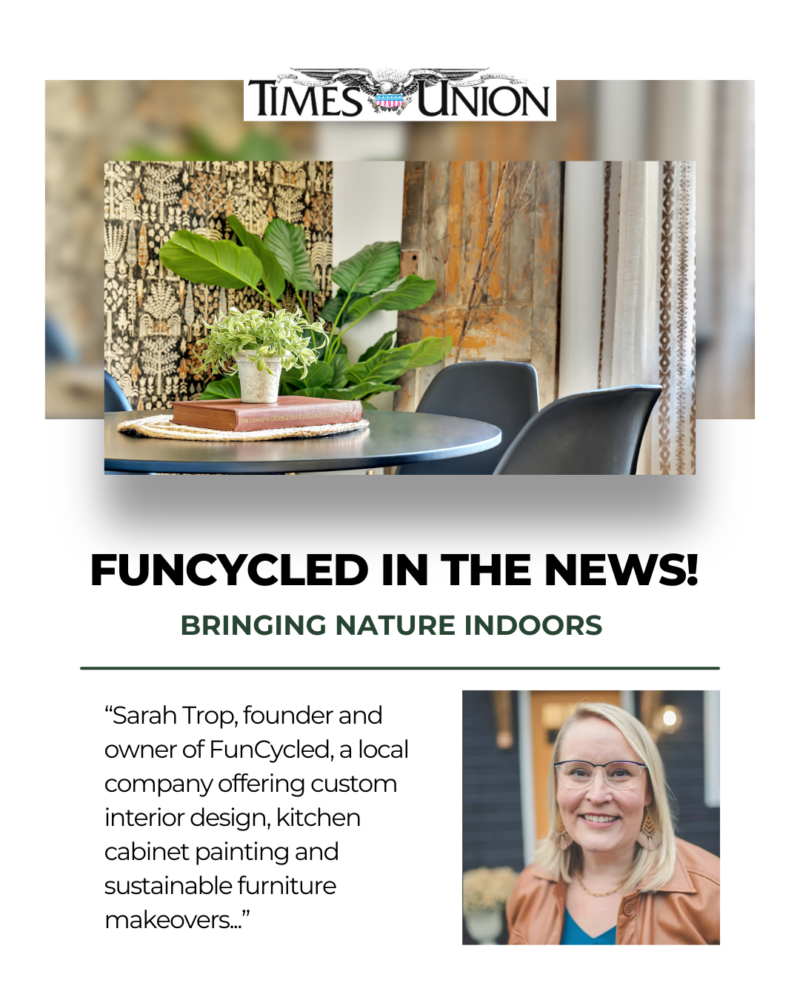
Hi friends!
I hope you had a great weekend! The longer days of summer sometimes fool me into thinking that time stands still, but as I write this, I realize that the month of July is nearing conclusion. I love summer, from start to finish! And, technically speaking, we still have over 7 weeks of summer still to go! : ) Well, what on earth are we going to do with all that time? For me, I will do what I love to do most…keep designing spaces!
Part of my process as an interior designer is to keep learning new ideas and finding ways to inspire and encourage us as we create and design spaces we can call our own. Today, I am excited to share a new design style with you! This style is called the Biophilic Design Aesthetic. First, I love the word biophilic–it is soft yet intriguing. When I first heard it, I was drawn in and wanted to know more, and I am so excited to share all of this with you!
What is biophilic design?
In my digging, I learned that biophilic design is actually not a new idea or emerging concept. As a matter of fact, architects have been employing this design and approach as a means of creating building plans focused on connecting people to the natural world.
What are some examples?
Here are a couple of examples of Biophilic Architectural Designs. These photos are care of Render4Tomorrow Studio and are credited and linked below.

Photo: Matteo Morando

Photo: Fred Romero
Another great example of this is Frank Lloyd Wright’s Fallingwater, the house designed for the famous Kauffman family of Pittsburgh in 1935. His design was considered “organic architecture,” but it falls within the vein of biophilic design.


What does all of this have to do with designing your home?
The examples I have given above likely feel outside the scope of a typical project that you and I would be able to incorporate into our homes. But just because we may not see how to replicate something on that scale, doesn’t mean we can’t find ways to introduce some elements of biophilic design into our own spaces. And the best part is that right now, we are seeing design trends that embrace a biophilic approach and aesthetic into everyday home design, and the outcome is beautiful! Here are some inspirational pics, reflective of this trend, from Better Homes & Gardens. Photo credits linked below.


How can you incorporate this into your home?
I would like to share some ideas and tangible ways for you to add a biophilic touch (or even a few) to your home. But before I do that, here are some key elements of biophilic design that you should prioritize if you want to get this look: maximize light, feature plants, consider more organic shapes, and use natural materials. Check out the tips below along with product links to create this look for your home, too. Note some of the the links provided are affiliate links, and as an Amazon Associate, I earn from any qualifying purchases.
MAXIMIZE LIGHT
Be sure to allow as much light as possible. This might be totally forgoing anything on your windows, or maybe it’s really minimizing your window treatments. Rather than having full drapes, just use sheer linen panels like those shown below.
If you live in an apartment and would like to maximize the lighting in your environment but have limited natural light, select a glass lamp with a rattan shade, like this simple design below. Oh, and don’t forget to select a light bulb that is labeled “daylight.”


MAKE PLANTS A FOCAL POINT
There are plenty of ways to add plants (or even the idea) of plants into your home. Here are some ideas to help you figure out the best way to add this element into a biophilic inspired design in your space.
Using live plants is the most ideal way of employing a biophilic approach, and an easy way of adding live plants indoors is to create a propagation station on a wall. Look at these fun examples below!


If growing plants is just not quite your thing, or if you live in a place that makes growing live plants a challenge, why not “add” plants in another way. Add botanical wallpaper or enlist an oversized faux plant. Both can add that touch of nature even if it is not quite the real deal!


INCLUDE ORGANIC SHAPES
Sometimes we get stuck in a rut with the kind of shapes we have in our homes. We may be tempted to think squared off edges or perfect spherical finishes are the only options we have, but when embracing a biophlic design, you are freed up to let that go! If we are seeking to add some touches of nature into the home, the shapes we select should include soft and organic lines. I love these examples below.


EMBRACE NATURAL MATERIALS
Think wood, stone, linen, leather, etc….In keeping with a biophilic approach, being mindful of the materials we choose is essential not only to the look and feel of this type of design but it is also a way of actively choosing items that are more sustainable – an important consideration for us at FunCycled!


Pillow Covers – Amazon
How does Funcycled Approach Biophilic Design?
Adding Biophilic touches to our designs is integrated into many of our projects. Check out some of our projects in this news article from Times Union.
Bringing Nature Indoors
I am so proud to share that our Biophilic focused designs have been featured in our local news, thanks to Shannon Fromma at the Times Union. Y’all get a big shout out from #funcycled!! Thanks for sharing about my passion for sustainable design! Read the article here: Bringing Nature Indoors
I hope you have found some new inspiration and have become more curious about biophilic design in reading this blog. I have really only scratched the surface here, so if you do a little digging yourself, I would love to hear from you, too. What other things did you learn? What ideas did you come up with?
Take the time to really consider some of these suggestions. I think you will find a good jumping point! Of course, if you aren’t sure where to begin, I would love to help you! You can check out more details about our Interior Design Services.
Thank you all for following along! If you’d like to get this blog in your email once a week, please sign up for our weekly newsletter by adding your email in the little box below my picture.
If you’ve enjoyed this post, please like FunCycled on Facebook, Instagram and Pinterest if you don’t already. Keep up to date on the newest finds, vote on colors and give your input on our creativity. We share fun tutorials, great before and after, and new design inspirations.
We offer interior design, kitchen cabinet painting, and custom built tables, barn doors, and repurposed furniture. Thank you, again, for working with us and for taking the time to spread the word about what we do.
Happy FunCycling Friends,
Sarah ;)
Note some of the the links provided are affiliate links, and as an Amazon Associate, I earn from any qualifying purchases.


